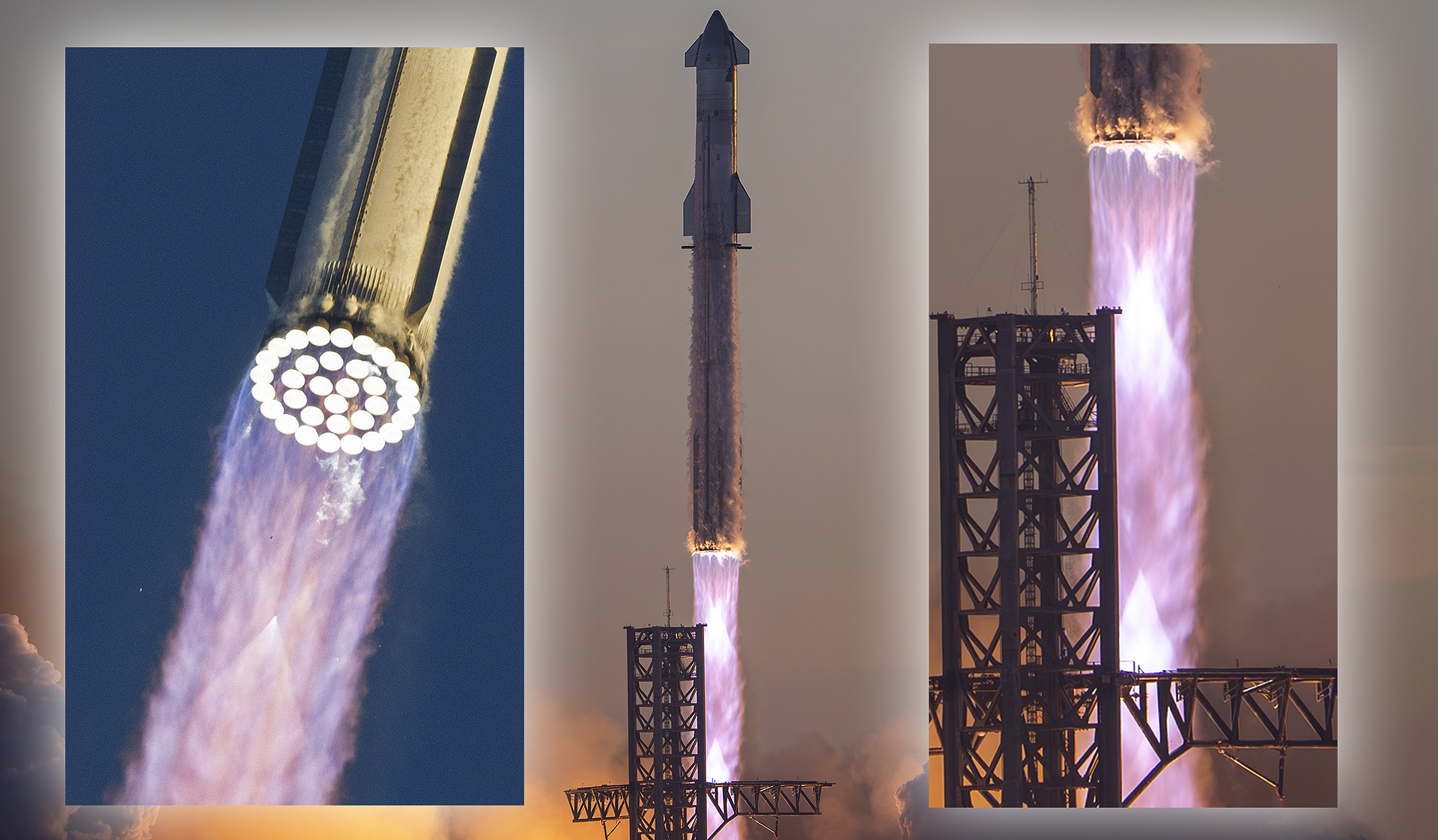SpaceX’s massive Starship rocket lifted off for its second test flight over the weekend. Among the stunning imagery and video to have emerged from the launch that caught our attention was the sight of its super-heavy rocket booster generating gargantuan “mach diamonds” or “shock diamonds.” What’s particularly impressive is how the rocket booster’s 33 Raptor engines combined to create a perfectly formed mach diamond as the stack lifted off the pad.
Given how incredible this example of physics visualized on a grand scale looks in the photos, we thought it was an opportune moment to dig deeper into the science behind them, as well as explain what makes their unique appearance during the recent Starship test launch so intriguing.
The ‘Starship’ system, comprised of a super-heavy rocket booster and spacecraft, took off from SpaceX’s Starbase facility near Boca Chica Beach in South Texas on November 18. In a significant development for SpaceX, and in comparison to the first Starship test launch in April, the rocket booster was successfully able to separate from the spacecraft. This was before the rocket booster exploded over the Gulf of Mexico at an altitude of 91 miles (148 kilometers). Moreover, contact was lost with the spacecraft after it reached space, with the company having to trigger its self-destruct feature shortly thereafter. Eventually, Space X intends for its Starship system to carry crew and cargo to Earth orbit, the Moon, Mars and beyond.

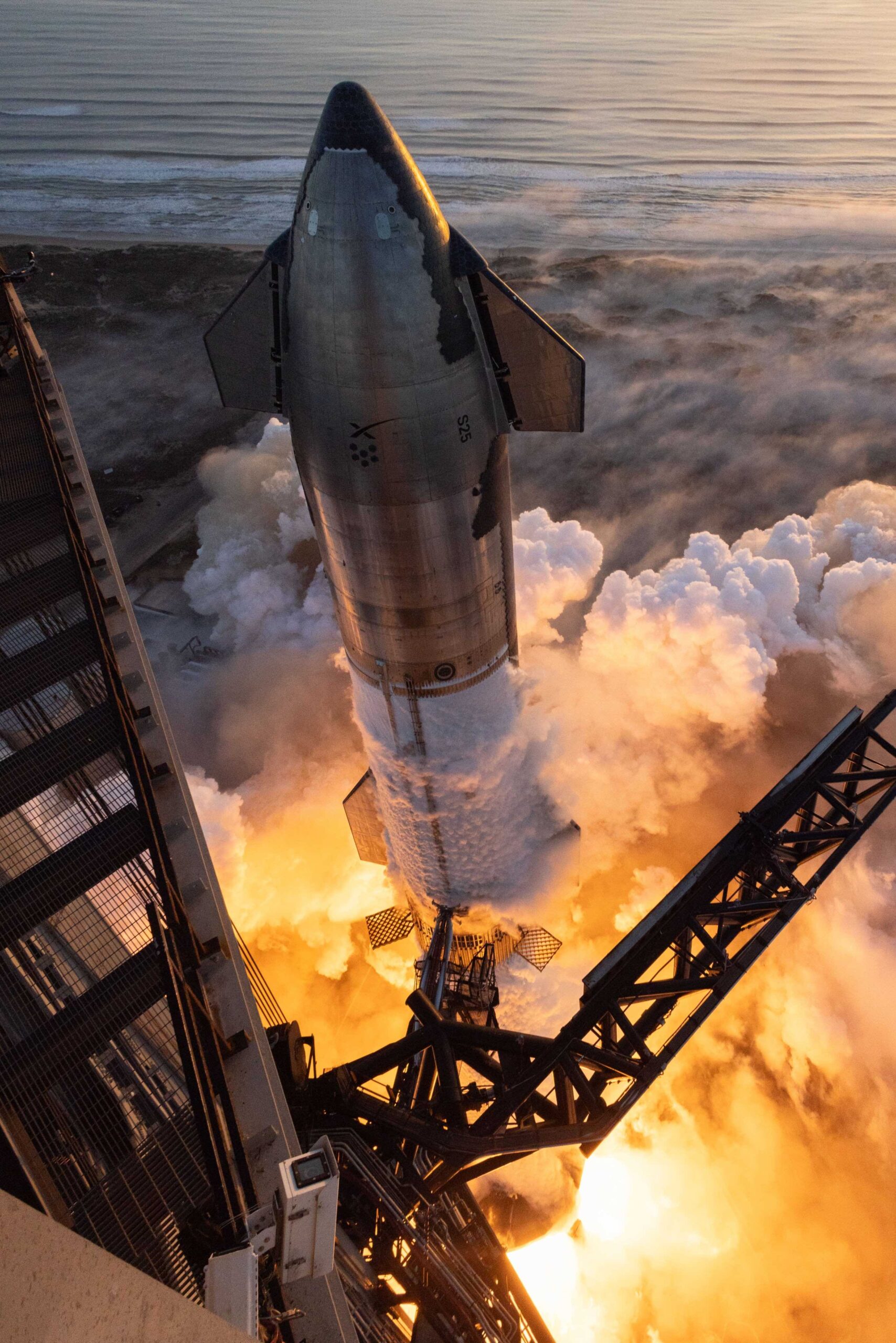

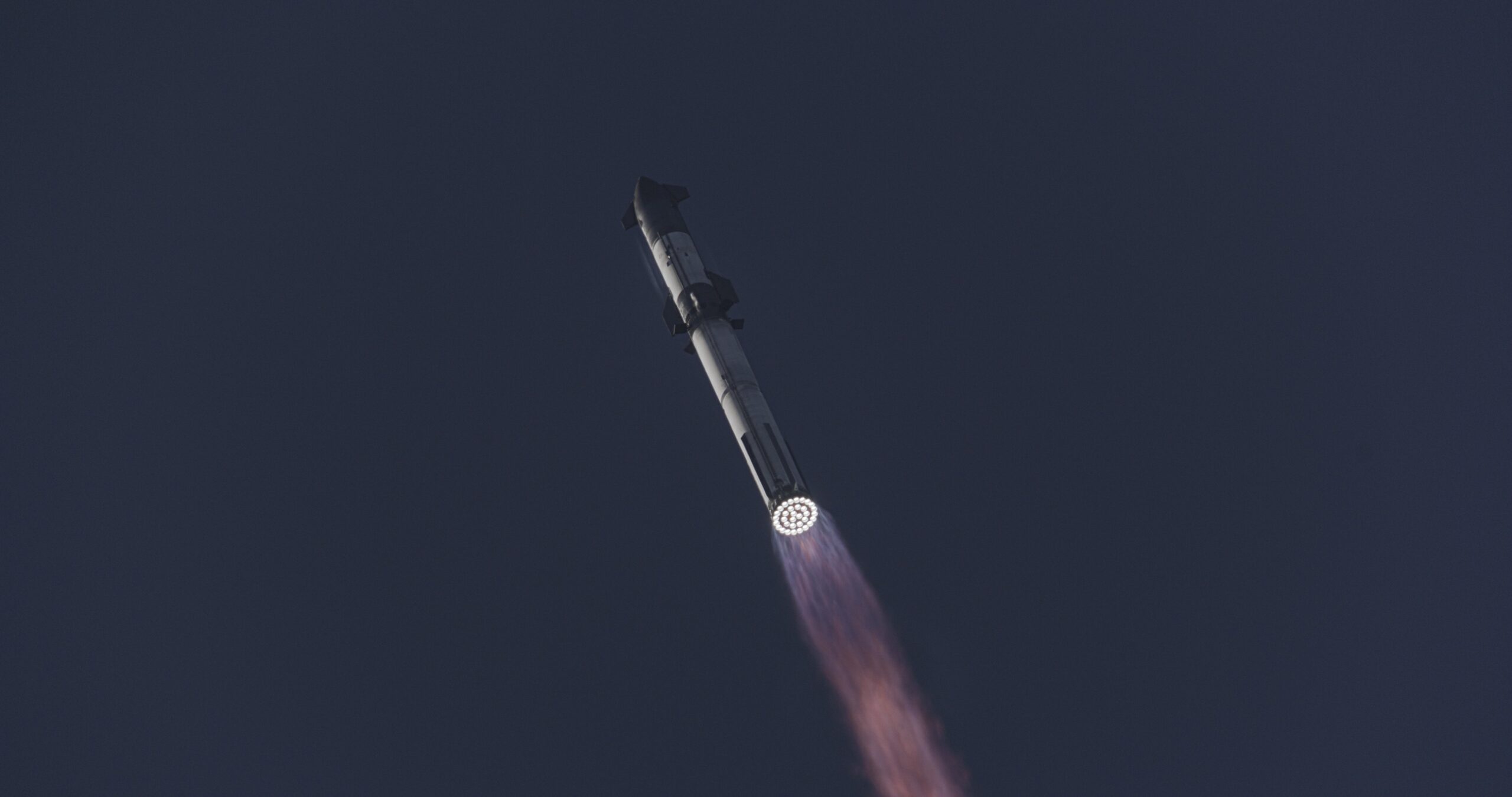
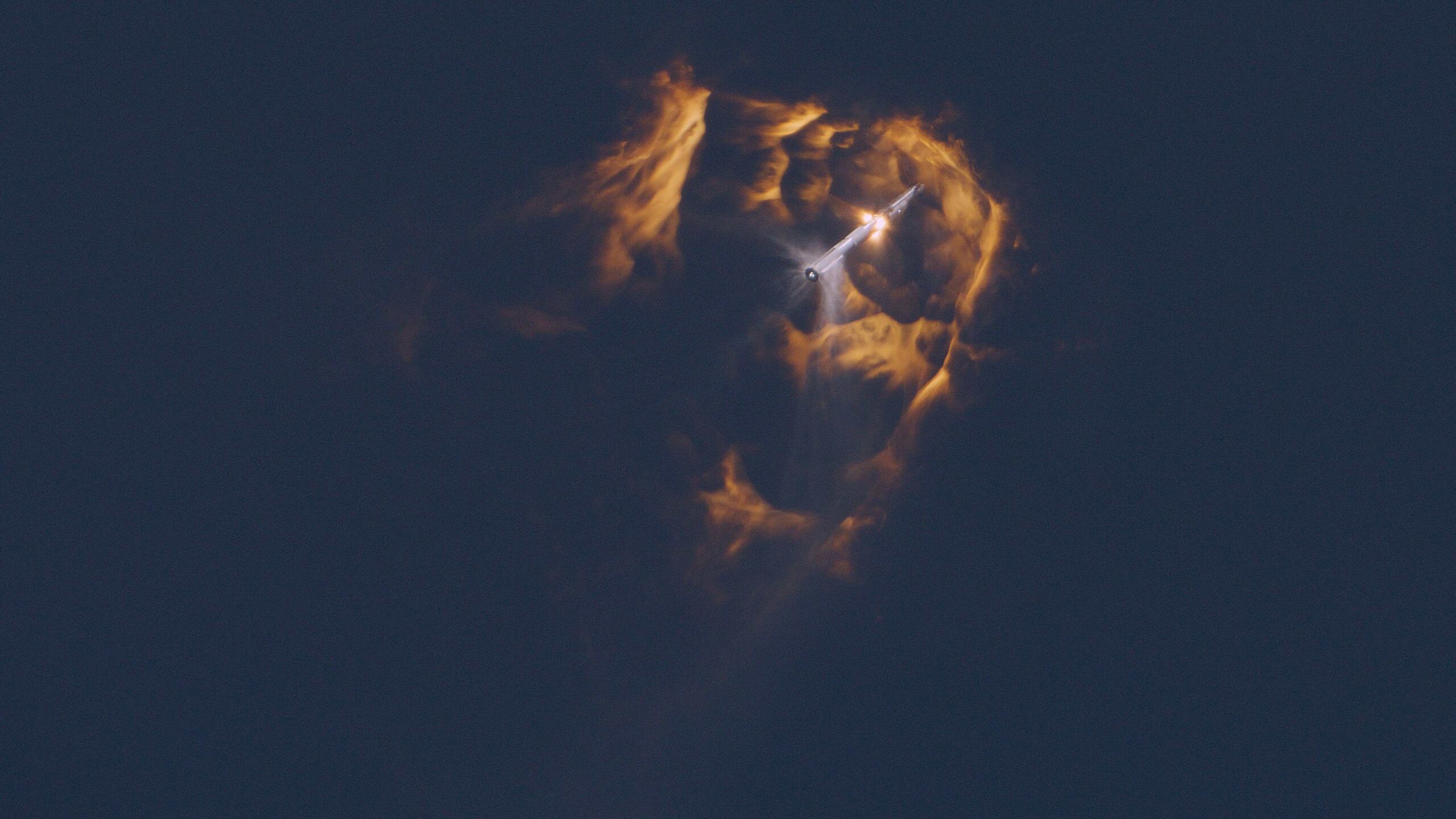
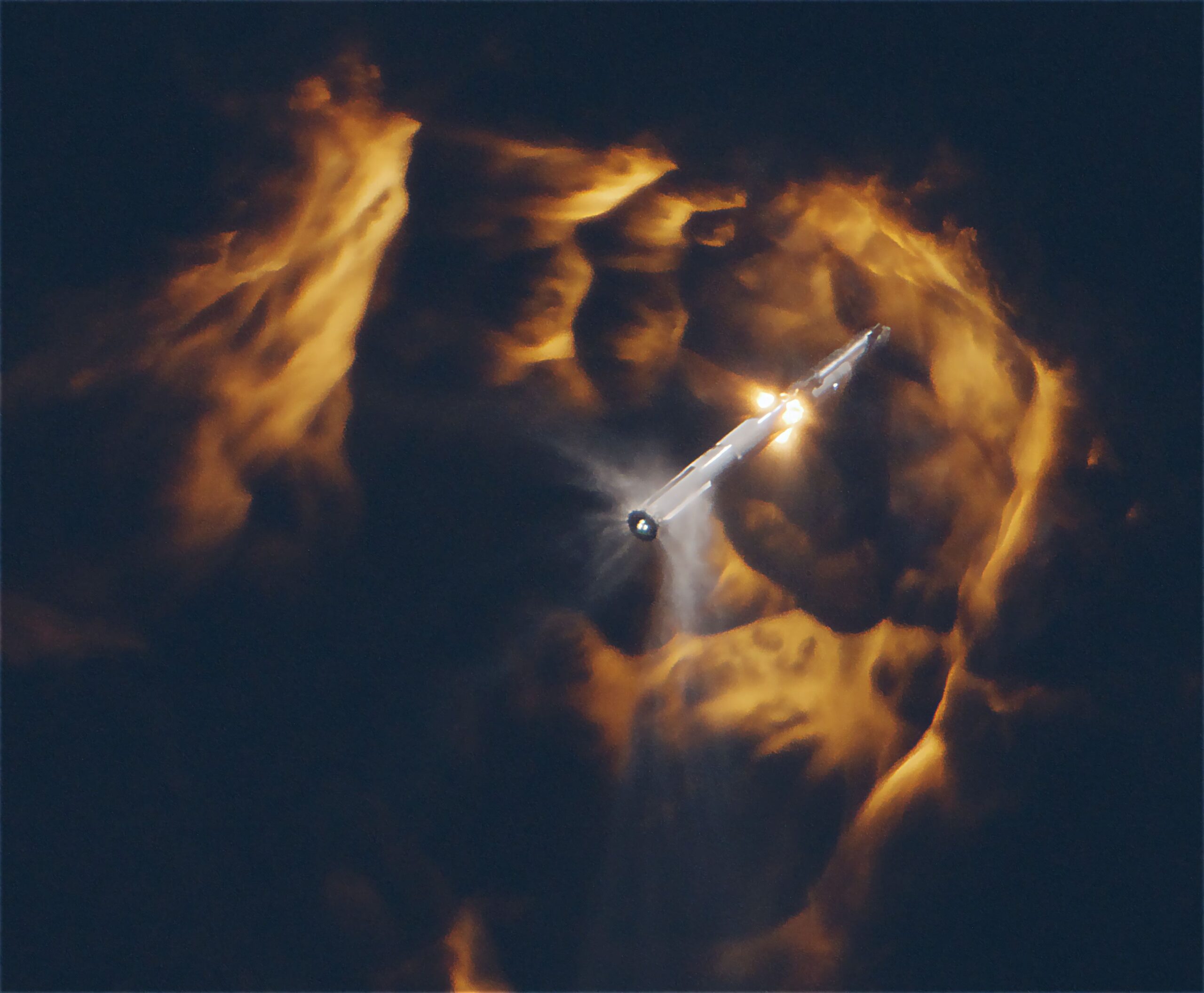
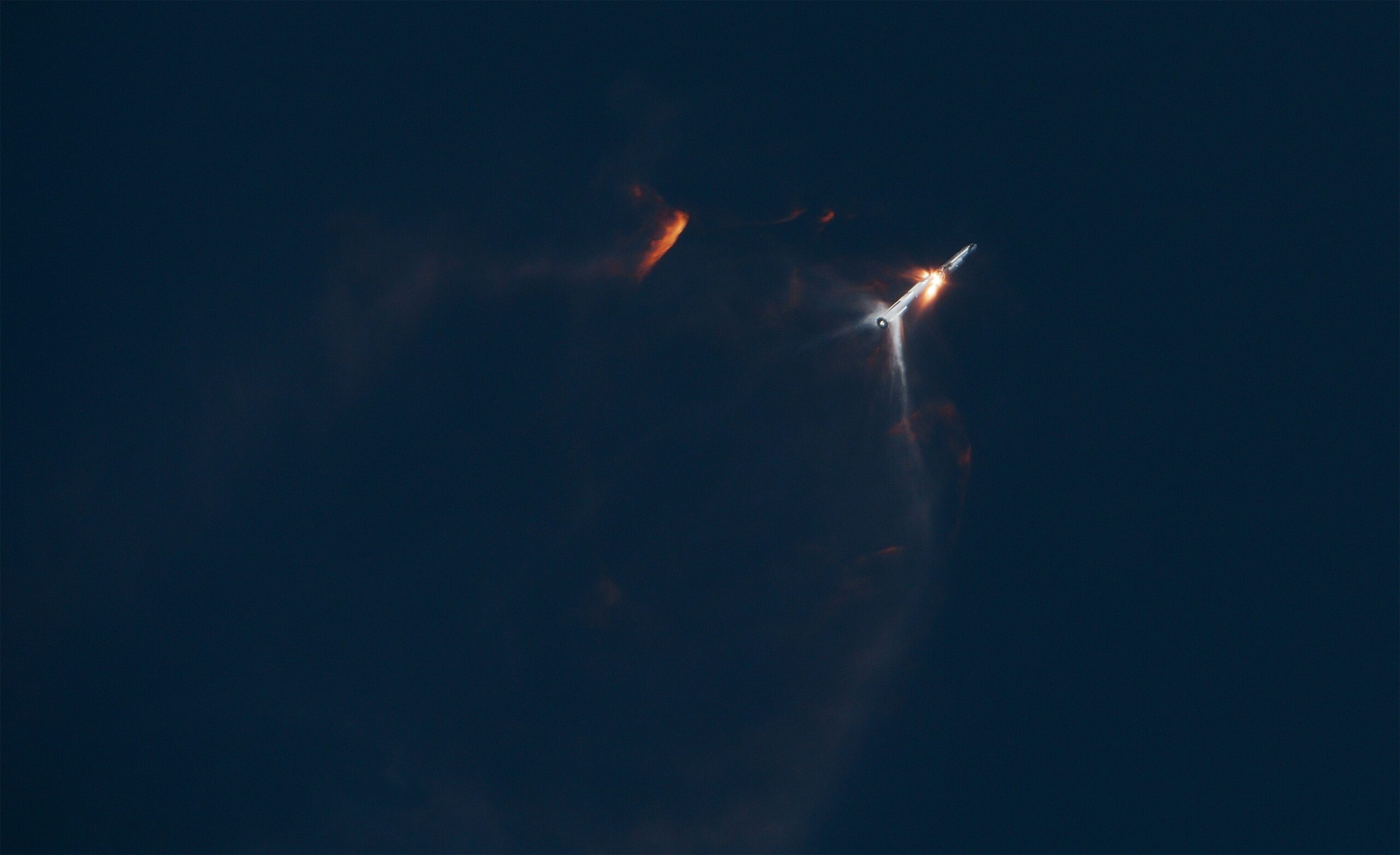
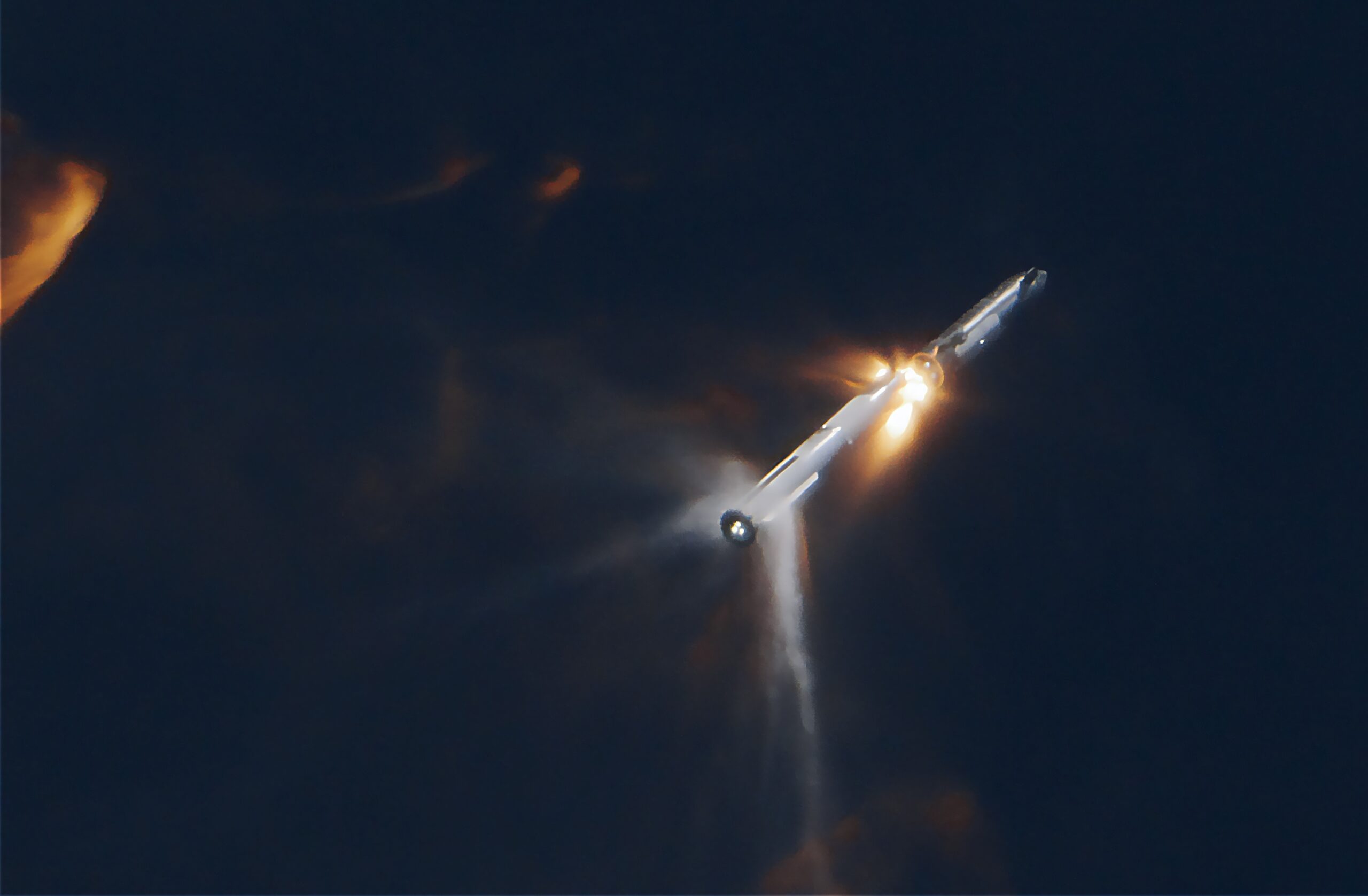
While mach diamonds are more commonly seen when high-performance jets are in afterburner, Starships’ case is a unique as this phenomena was the culmination of 33 rocket engines firing in unison.
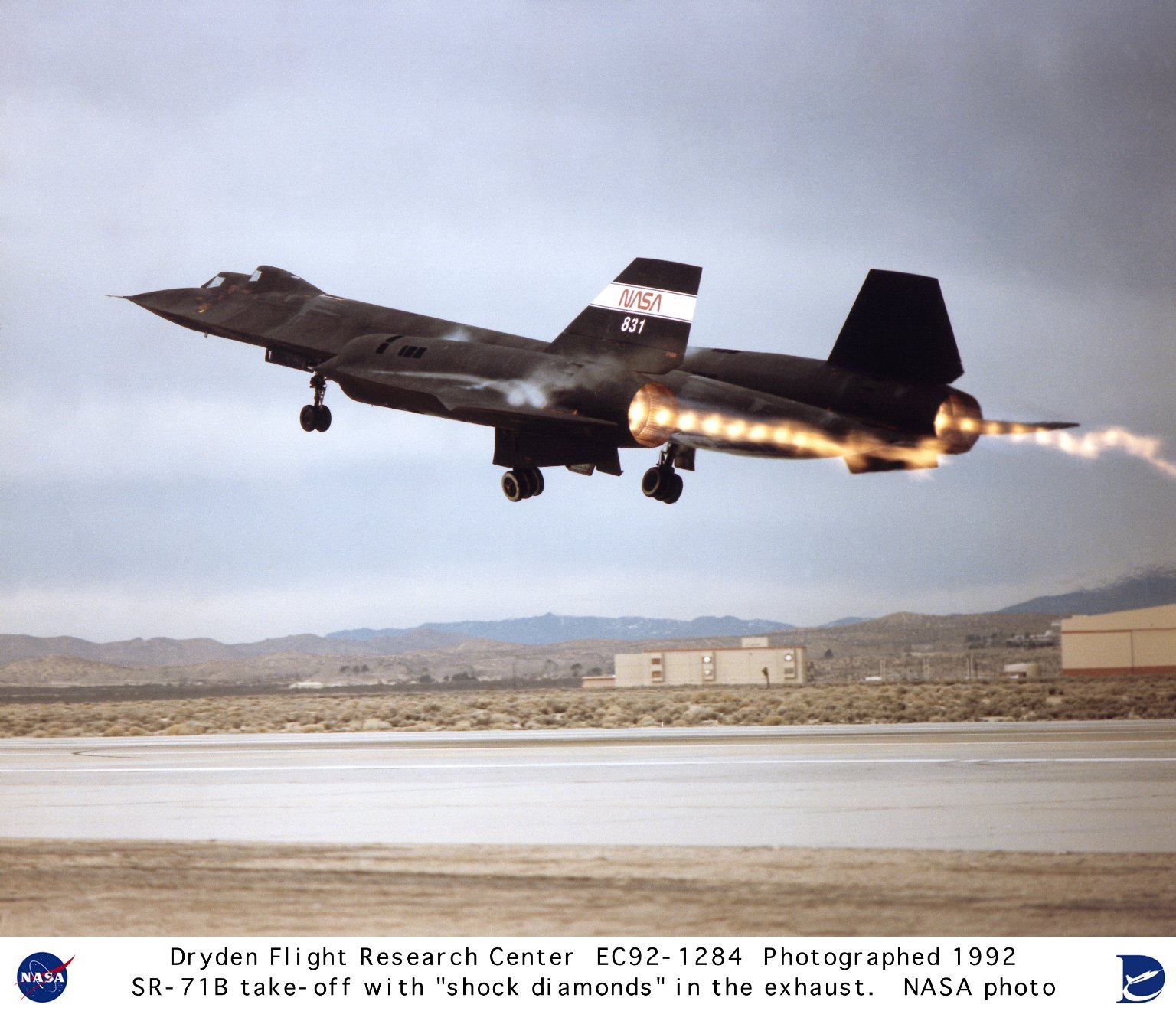

Its super-heavy rocket booster’s 33 engines includes 13 in the center and 20 surrounding the perimeter of the booster’s business end. Burning methane with liquid oxygen, the rocket booster is capable of creating a mind-boggling 16.7 million pounds of thrust.
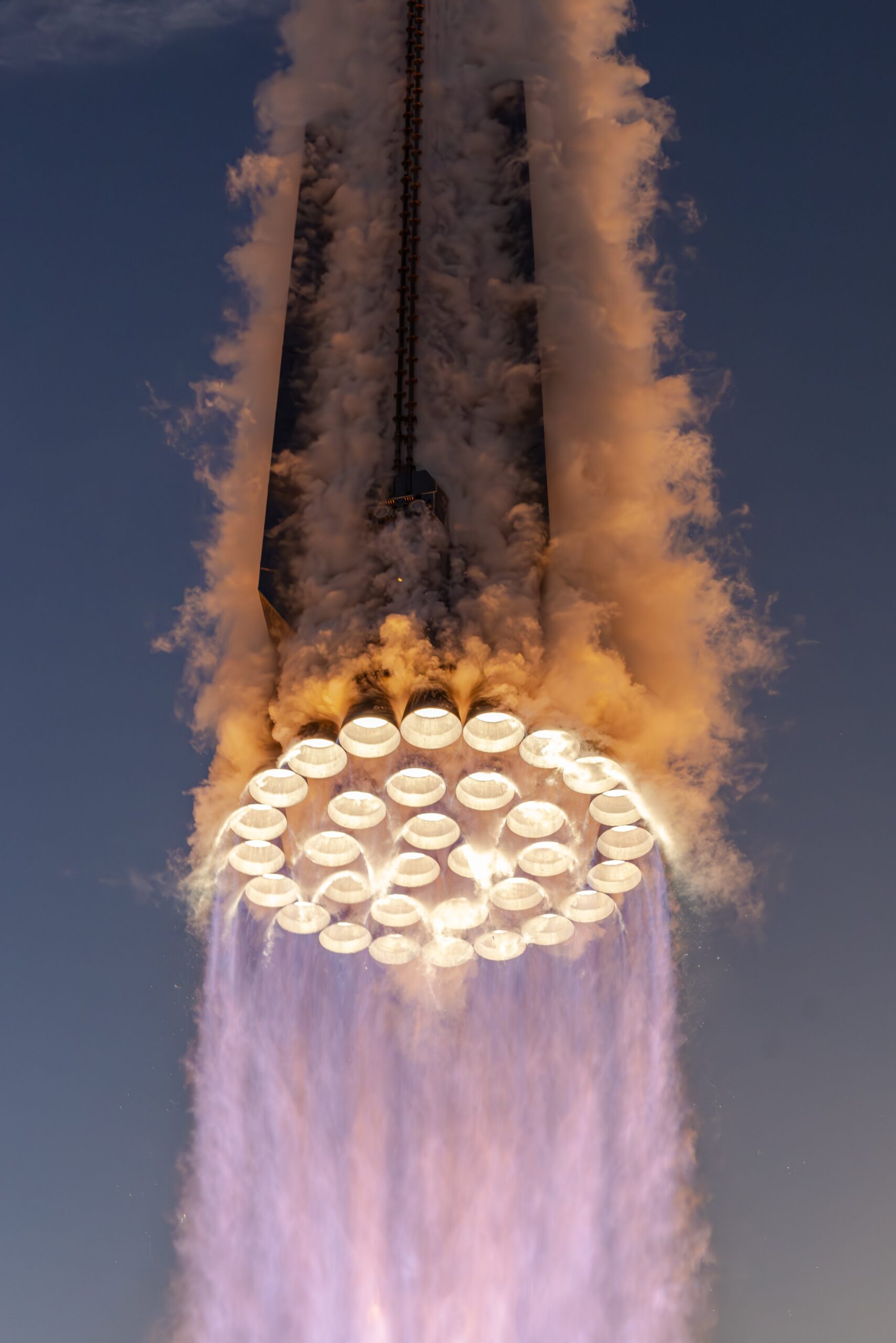
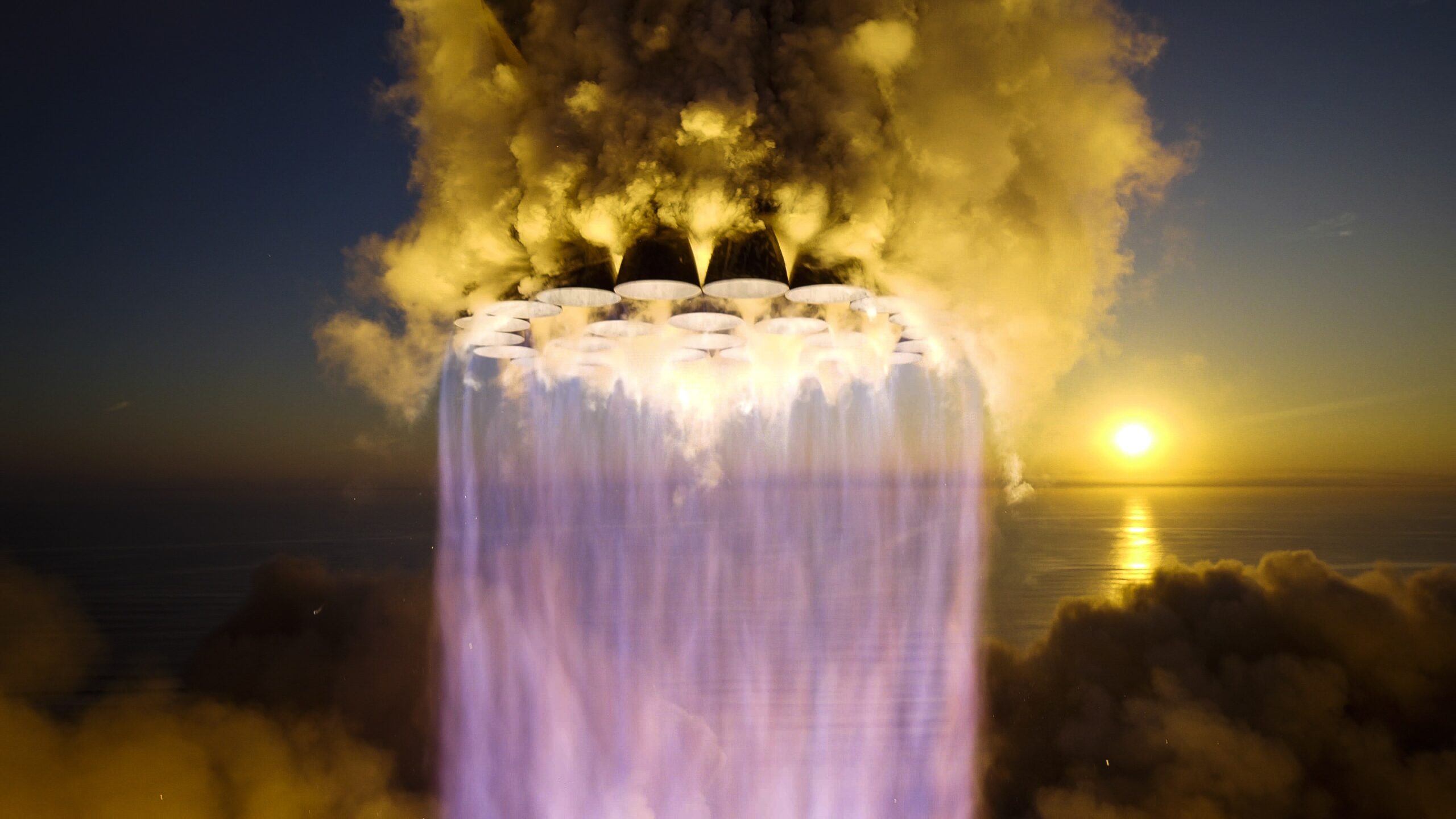
In order to understand how the shock diamonds were produced during the Starship launch, we reached out to Dr. Chris Combs (@DrChrisCombs ), the Dee Howard endowed assistant professor of aerodynamics at the University of Texas at San Antonio’s Department of Mechanical Engineering. Dr. Combs began by explaining how mach diamonds are formed in detail:
“Nature is always wanting to bring things back to equilibrium, in a sense, [to] kind of get things back to the way that they were in how they started,” he said. “There are a lot of different processes in nature that work that way, and pressure differences is one of those.”
“When you have something like a rocket, or a jet engine, that creates these really massive pressure differentials, relative to atmospheric air… physics is going to want to change that, and it’s going to want to match those values up somehow. And if the pressure differentials are large enough, the only way that that can happen is with a shock wave or an expansion fan. And so these are compressible flow features, and waves that show up when basically you have a very large imbalance of pressure between two masses of air.”

“At sea level, when you have a rocket launch, the exhaust that’s coming out of the rocket is lower than atmospheric pressure… [resulting in] very high chamber pressures. But then you actually expand that gas through a converging divergent nozzle, to accelerate it to very high speed, because that gives you thrust. So you’re trying to accelerate that exhaust as fast as you can. And when you do that, the energy that was there in terms of pressure, gets… transferred to velocity and momentum. And so you’re getting that thrust out, but you’re losing pressure in the process. So that gas comes out lower than atmospheric pressure, when it comes out of rocket exhausts. And it’s low enough where… the only way that that can be matched to atmospheric pressure is with a shockwave, and so the air gets processed through the shockwave.”
“The reason you see a diamond pattern,” he indicated, “is because the angle of that shockwave is going to be determined, really just by [the] pressure ratio.”
Combs went on to explain why Starships’ 33 Raptor engines were capable of forming single mach diamonds during the launch.
“When you typically see a shock diamond or a mach diamond, it can be from like a jet engine test, or a single rocket nozzle test. [When you] look at those up close… you see the same shock diamond effect on the smaller scale.”
“But what was interesting, specifically about this case [the second Starship launch], is you had 33 engines firing together, which you would kind of intuitively think would make for a pretty messy environment. I think close up [this] is probably true, there’s some complicated dynamics happening there.”
“[When] you zoom out far enough, and really, what it boils down to is they’re [the 33 engines, are] acting like one engine. And so you have a region of low pressure caused by all of these engines working together. And that forms this larger mach diamond structure, sort of in the far field, as you zoom out. So you have all these little mini mach diamonds from each one of those engines that’s generated… That is especially unique, because there aren’t very many rockets… that tried to function with this many rocket nozzles pack that closely together… the closest comp[arison] being the Soviet N1.”
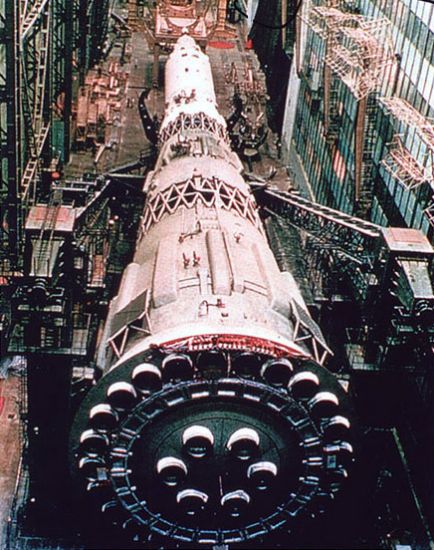
It should be noted that images taken from the launch also show additional diamonds forming a string, which can be seen below. “What you will notice, if you watch a rocket launch, as that rocket goes up in the air… [is] that angle is going to slowly change over time,” Combs noted.
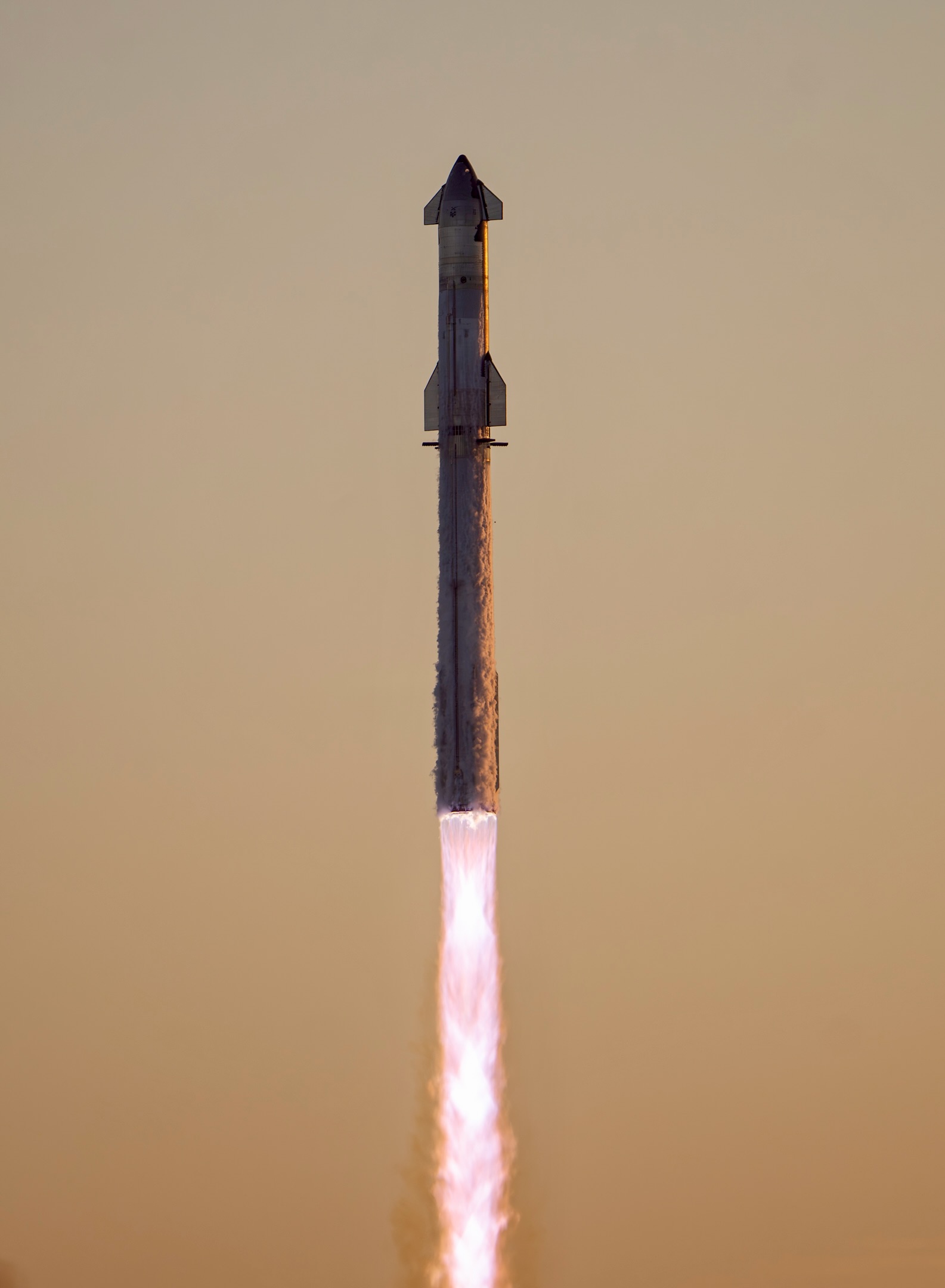
“And it’s actually going to slowly go basically towards parallel with the rocket body. As the rocket goes up, that atmospheric pressure is going to drop because you’re going higher up in altitude. And so that shock angle gets thinner as the rocket goes up until eventually the rocket exhaust is just going straight up and down, and you don’t see any type of diamond effect. And that’s… what we call a perfectly expanded exhaust. Because… the exhaust pressure is exactly what the ambient pressure is outside.”
During our exchange, Combs also urged people to think of the recent test, which has been reported by some outlets as a failure, more holistically.
“I think people get frustrated sometimes when I say it’s a long ways away,” he noted of Starship. “But you have to understand… this is a relatively immature technology right now, that’s going to take years to figure out versus [if] it’s never going to work. I don’t necessarily think it’s never going to work. I think that there are some really big hurdles that those engineers have to overcome. And it’s going to take time. So I think people need to kind of level expectations a little bit, but it’s definitely an interesting project to follow that’s extremely ambitious and high risk.”

So there you have it, an in-depth look at the gargantuan shock diamonds and why their merged appearance during Starship’s second test flight is so unique. A special thanks to Dr. Chris Combs for taking the time to provide us with such wonderful insight on this topic.
UPDATE: 11/21, 05:26 P.M. EST—
SpaceX has now released a slow-motion tracking shot of the super-heavy rocket booster’s 33 engines forming huge mach diamonds during Starship’s launch on November 18. Be sure to watch the footage below.
Contact the author: oliver@thewarzone.com
